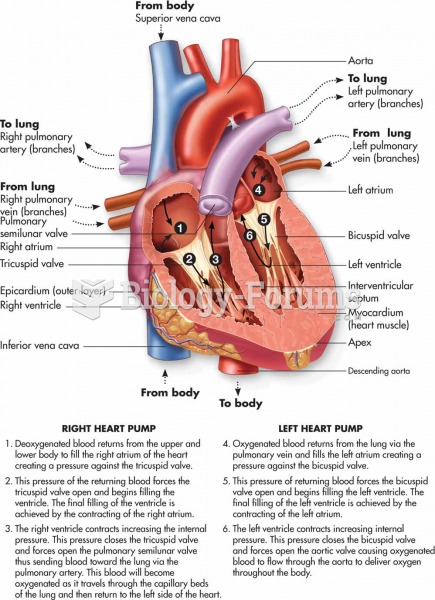|
|
|
Approximately 25% of all reported medication errors result from some kind of name confusion.
Medication errors are three times higher among children and infants than with adults.
About 60% of newborn infants in the United States are jaundiced; that is, they look yellow. Kernicterus is a form of brain damage caused by excessive jaundice. When babies begin to be affected by excessive jaundice and begin to have brain damage, they become excessively lethargic.
Hyperthyroidism leads to an increased rate of metabolism and affects about 1% of women but only 0.1% of men. For most people, this increased metabolic rate causes the thyroid gland to become enlarged (known as a goiter).
Eat fiber! A diet high in fiber can help lower cholesterol levels by as much as 10%.







